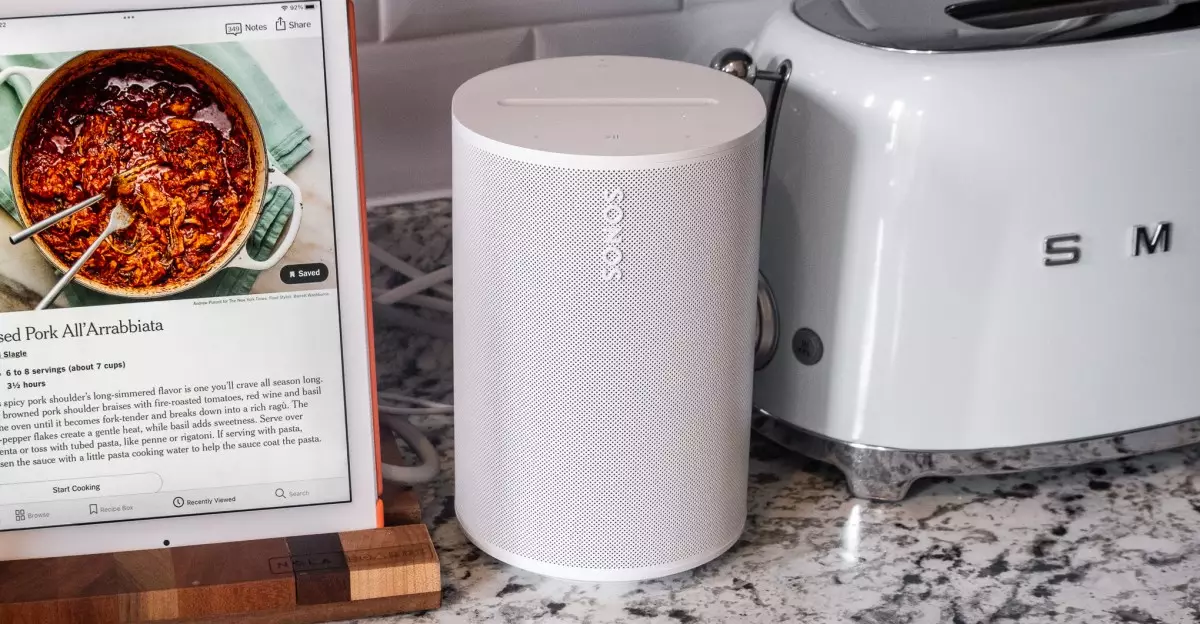In an ambitious bid to rejuvenate hardware sales amidst a sluggish market, Sonos has implemented a significant pricing strategy for two of its products: the Era 100 smart speaker and the Ray soundbar. Originally priced at $249 and $279 respectively, both devices now carry a reduced price tag of $199. This substantial price cut of $50 for the Era 100 and an impressive $80 for the Ray reflects a responsive approach to market demands and consumer behavior, especially as competition intensifies in the audio technology space.
Enhancing the Listening Experience: The Era 100’s Value Proposition
The Era 100, Sonos’ flagship mainstream speaker, sets itself apart from its predecessors—namely the Sonos One and Play:1—through enhanced stereo sound and additional functionalities, including line-in and Bluetooth audio options. The price reduction renders it not just a fair deal but potentially a gateway into the expansive Sonos ecosystem for new users. At $199, the Era 100 ingeniously blends advanced audio performance with accessibility. Its evolution marks a commendable move that invites consumers, who might have previously hesitated at higher price points, to experience what Sonos has to offer.
Furthermore, the careful attention to physical control design enhances the user experience, demonstrating Sonos’ commitment to marrying technology with usability. Such features map out a clear path for Sonos to solidify its position in consumer hearts and homes alike, appealing to both the audiophile and the casual listener.
A Cautious Recommendation: The Ray Soundbar’s Position
On the flip side, the Ray soundbar presents a more complex scenario. Unlike the higher-end models such as the Arc Ultra and the Beam (Gen 2), the Ray lacks HDMI connectivity, which means it does not support Dolby Atmos for surround sound. While this limitation may deter some high-end users, the Ray still proves to be a functional solution for those seeking an upgrade from their TV’s built-in speakers. As a straightforward option for compact spaces or secondary setups, its role becomes more about practicality than cutting-edge technology.
Notably, its current value at $199 is a more appealing price point considering it originally launched nearly three years ago. Despite a rocky start, where expectations weren’t met, this pricing strategy seems to align better with consumer expectations, providing a solid audio experience without overwhelming the buyer.
Reflecting on Broader Company Challenges
Sonos is not merely slashing prices; it is strategically recalibrating its focus in response to broader challenges, including the reliability of its mobile app—a known pain point for users. The consistent stream of software updates and an open Trello board for transparent tracking of fixes indicate a company that is listening to its audience and adjusting accordingly. Moreover, the cancellation of an anticipated video streaming player signals an essential move toward prioritizing core products that define the Sonos brand, suggesting a pivot back to its foundational strengths.
Ultimately, this bold rebranding approach can be seen as a reflection of the company’s resilience and adaptability, emerging from setbacks with a refreshed perspective on what it means to serve its customers at a fair price. With these strategies, Sonos sets the stage for a potential resurgence in consumer interest and trust. The question remains: will this revamped focus on value help Sonos reclaim its place as a leader in the ever-evolving audio landscape?

